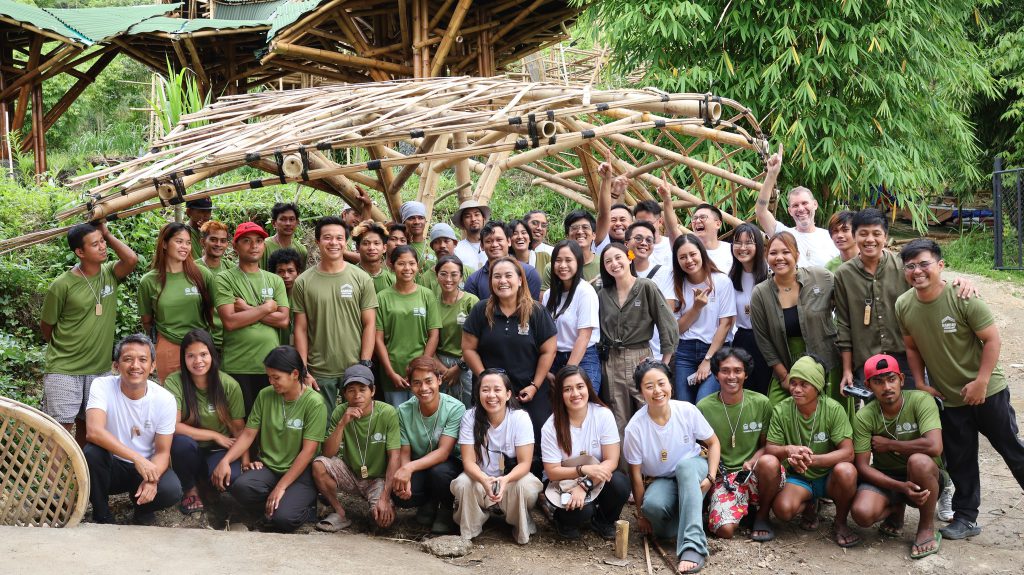
As an Amazon Associate, I earn from qualifying purchases. That means I earn commissions from my sponsored links or I make money when readers (you) purchase items through my links. Your purchase allows me to continue working as a stay-at-home dad who moonlights as a farmer and a musician. Needless to say, this post contains affiliate links.
If there’s one plant that deserves more hype in backyard farming, it’s gotta be bamboo.
This humble giant of the grass family has long been associated with traditional Filipino life — from bahay kubo walls to barbecue sticks — but it’s finally getting the recognition it deserves through Non-profit NGOs like the Bamboo Bootcamp as a sustainable, beautiful, and surprisingly low-maintenance natural fence for homesteaders and amateur farmers alike.
You can find them on Facebook and their website.
We have a few areas on the farm where bamboo grows and I intend to bring a few to my wife’s beach property and grow those bamboo trees in pots.
Why grow bamboo in pots?
Well, because my wife’s beach property isn’t as big as the farm. So, we can’t just let the bamboo grow wild and encroach on our livable space or our neighbors.
Placing them in pots makes it easier to keep their growth in check and also give us the opportunity to move them around as needed. You see, I intend to purchase a prefab home, hopefully this year so we can have our very own place to live in within the city limits.
Placing them in pots will also stop the talks about cobras living in them, although I would welcome one and respect it enough to keep my distance.
Since I have limited funds, I’m going to try and establish a temporary but usable fence through potted bamboo plants. They’re tall enough and can grow thick enough to provide enough privacy and heavy enough once fully grown to prevent movement.
With this type of setup, I still won’t be able to automate my gates but it’s cool. At least that will also delay gate maintenance issues that I may encounter in the future.
Why Bamboo is Perfect for the Philippine Climate
First things first: bamboo loves it here. The Philippine climate is practically tailor-made for it.
We’ve got:
- Tropical sun
- Plenty of rain
- Humid air
Combine those with our acidic-to-neutral soil, and you’ve got bamboo paradise. In fact, the Department of Agriculture promotes bamboo as one of the future cornerstones of sustainable agriculture in the country.
It can also tolerate drought, flooding, and our moody monsoon seasons. If you’re from areas like Calinan in Davao, you’re sitting on a goldmine of ideal bamboo-growing conditions.
Different Varieties of Bamboo to Grow in Pots
There are almost 1,500 species of bamboo worldwide, which makes it a very interesting plant for people who like collecting different species of plants and grow them in their backyard.
But we’re not covering all of the bamboo species available in the world for now. Just a few that can thrive in the Philippines and ones we can use for practical reasons:
1. Bambusa vulgaris (Common Bamboo)
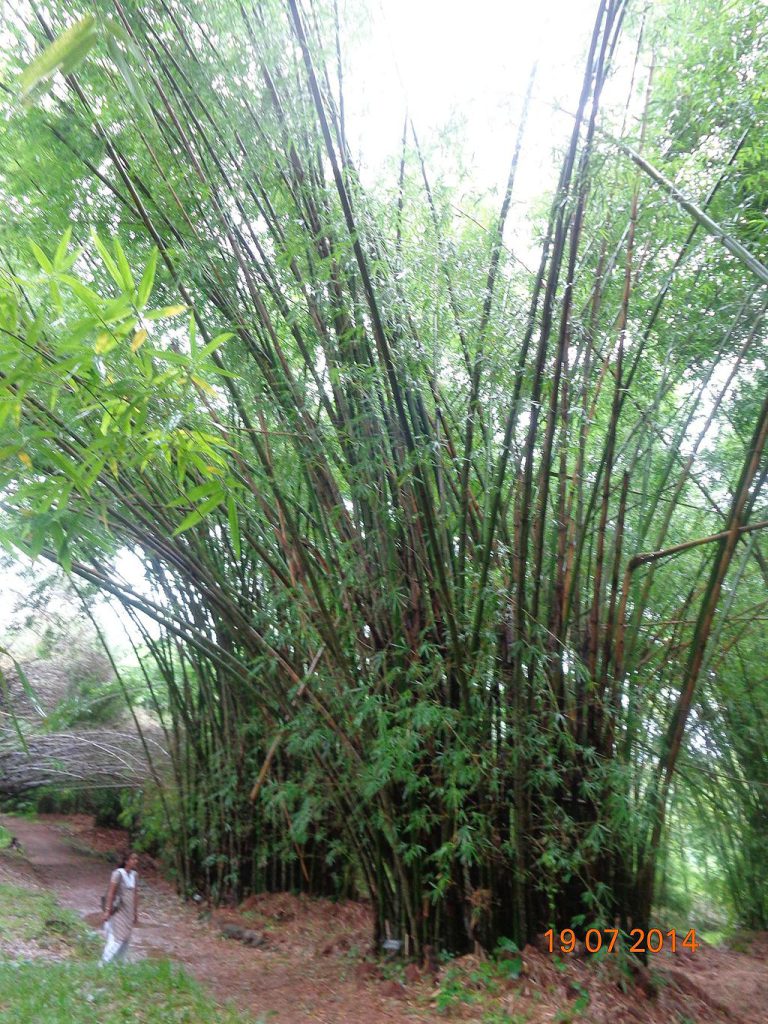
- Fast-growing
- Tolerates pots well
- Bright green or yellow stems
2. Dendrocalamus asper (Giant Bamboo)
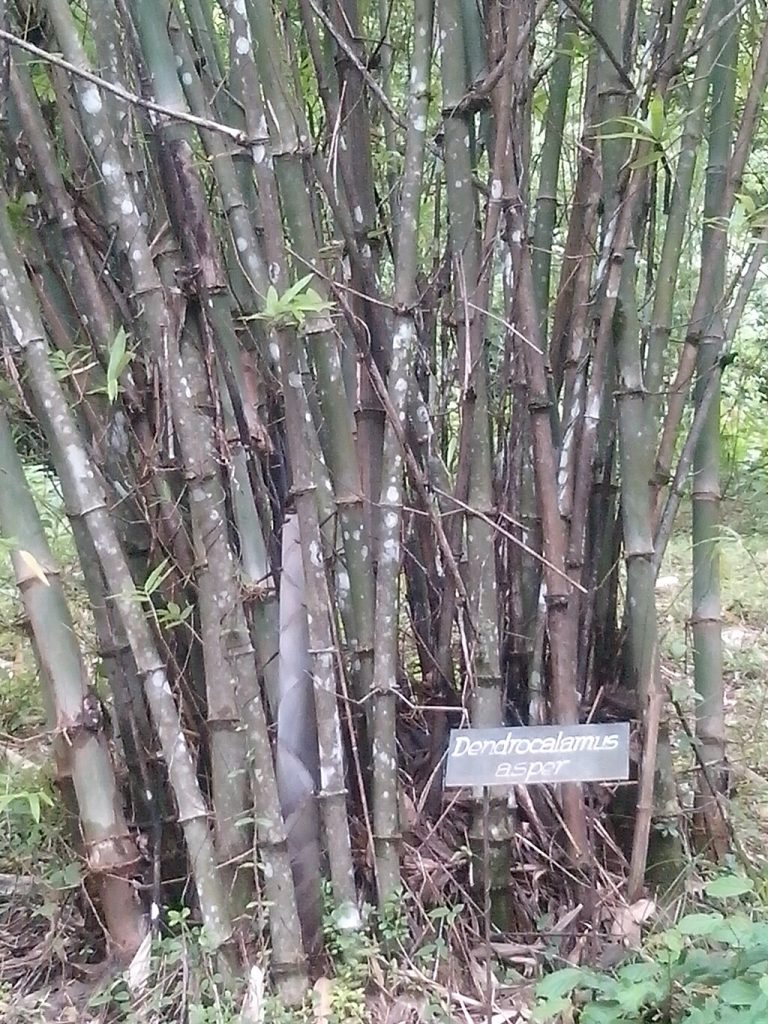
- Edible shoots
- Excellent for fencing
- Needs bigger pots and support
3. Bambusa multiplex (Hedge Bamboo)
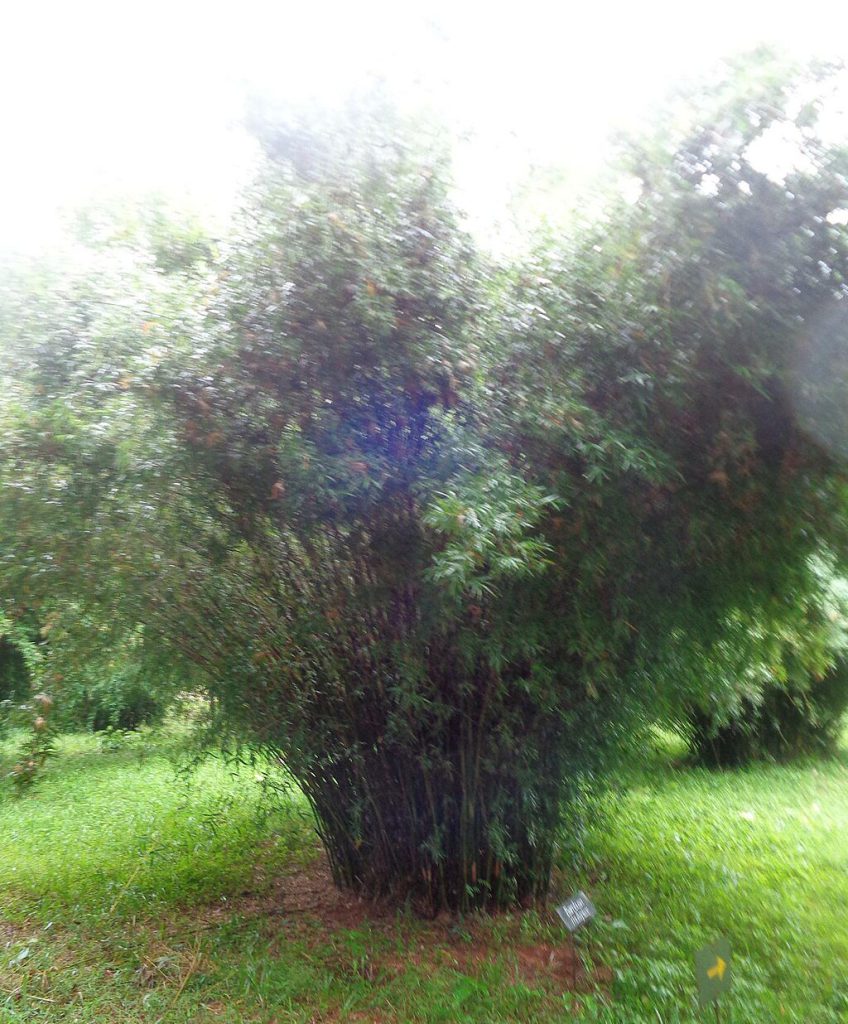
- Bushy growth
- Ideal for decorative fencing
4. Phyllostachys aurea (Golden Bamboo)
- Slower spread
- Beautiful color
Pro tip: Stick to clumping bamboo varieties for pots. Avoid the running types unless you want your whole yard (or neighbor’s yard) swallowed by it.
Ideal Bamboo Traits for a Potted Fence:
- Clumping, not running (to avoid invasion and root-bound chaos)
- Grows to 2–4 meters (6–12 feet) — tall enough for privacy, short enough to prune
- Thin to medium culms — not the thick, timber-type canes
- Upright or vase-shaped habit (less leaning/splaying)
- Slow to moderate growth rate (less repotting, easier upkeep)
- Can tolerate pruning and topping
- Adapts well to container life for 10–20+ years with proper care
Why use potted bamboo as fencing?
- Portable – move it when needed
- Non-invasive – won’t take over your land
- Attractive – way prettier than barbed wire
- Multi-purpose – can serve as a windbreak, sun shield, or privacy screen
Land Preparation — Or in This Case, Pot Preparation!
When we say “land prep,” for potted bamboo we’re really talking about container choice and potting mix.
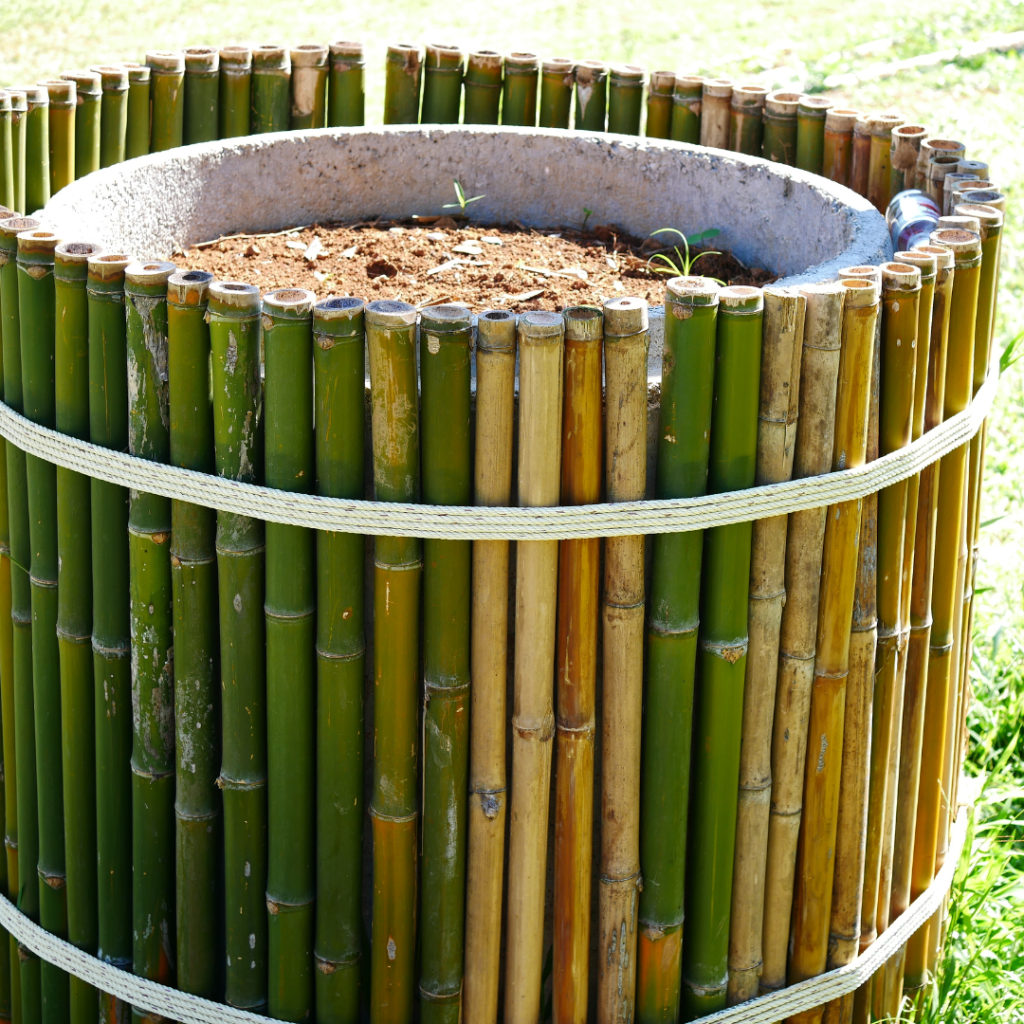
Pots:
- Use large pots (at least 18 inches wide and 24 inches deep)
- Make sure they have good drainage holes
- Choose sturdy materials — clay, concrete, or thick plastic
Potting Mix:
- 50% garden soil
- 25% compost or aged manure
- 25% sand or coco coir for aeration
Don’t forget to line the bottom with gravel for better drainage.
Fertilizer Application
Want fast, thick, healthy growth? Fertilize your bamboo.
- During the growing season (March to September): Apply high-nitrogen fertilizer (like urea or composted chicken manure) every 4-6 weeks.
- During the off-season: Reduce feeding to once every 2 months.
Use fish emulsion or compost tea for an organic option. Bamboo is not too needy, but when fed well, it thrives.
Propagation
Most of the time, we propagate bamboo by cuttings or divisions.
Cuttings:
- Use a healthy culm section (about 2–3 nodes)
- Seal the top with wax or charcoal
- Soak in water overnight before planting horizontally in soil
Division:
- Dig up a clump from an established bamboo
- Divide the root ball with a sharp bolo
- Pot immediately and water generously
Planting the Bamboo
Now that you’ve got your cuttings or divisions, it’s planting time!
- Fill your pot halfway with your soil mix
- Insert cutting/division vertically (or horizontally for culm cuttings)
- Cover the rest with soil and tamp down lightly
- Water thoroughly
- Place in partial shade for the first 2 weeks
Simple. Just like planting eggplants or okra, give your bamboo a gentle start before throwing it into full sun.
Irrigation
Bamboo loves moist soil but hates being soggy.
- Water daily during dry months
- In rainy seasons, water every 2-3 days or as needed
- Avoid overwatering — pots should never sit in water
Pro tip: Mulch the top with dry grass, coco husks, or leaves to retain moisture and keep the roots cool.
Cultivation and Weeding
Not much weeding needed when it’s in a pot, but you’ll still need to remove competing weeds and lightly till the topsoil once a month to keep it loose and aerated
If it’s in the ground (or you’re planning to transfer it), keep a 1-meter weed-free radius around the base.
Pest Management
Bamboo is generally pest-resistant, but here are some to look out for:
- Bamboo aphids – Spray with neem oil or soapy water
- Borers – Cut and burn infected culms
- Fungal spots – Remove affected leaves, improve air circulation
No need to panic. These pests are rare in pots, especially when plants are healthy and well-fed.
Bamboo as a Natural Fence — In Pots!
Now to the part where we use bamboo as a natural and functional fence.
Making a fence using bamboo in pots is a smart, sustainable, and non-invasive way to create privacy or a natural barrier — perfect for renters, small backyards, or those testing out bamboo before planting in-ground.
How to do it:
- Line up large pots (minimum 18–24 inches wide and deep) side by side along the edge of your property. Space the pots 2 to 3 feet apart. Make sure the pots have good draining holes. You can arrange the pots in a straight line or with a slight curve to fill in the gaps. For a cleaner look, align the pots against an existing wall or create a double row for density.
- Make sure you fill the pots with quality potting mix (50% soil, 25% compost, 25% sand or coco coir). If you need those, we have them in stock. Just head on over to our shop.
- Plant clumping bamboo varieties like the Bambusa vulgaris or Bambusa multiplex. Clumping bamboo grows upright and compact — making it ideal for container fencing. Furthermore, Bambusa multiplex is bushy and good for screening while Bambusa vulgaris is fast-growing and strong.
- Use dry leaves, coco husks, or grass as mulch to keep young bamboo plants hydrated and cool. You’ll initially want to keep your young plants in a shaded area to protect them further from the sun.
- Water regularly, especially during the dry months. Fertilize every 4-6 weeks during the growing season and prune and shape regularly.
- Add trellis support if needed for wind resistance
With time, you’ll have a living wall. One that rustles in the wind, filters dust, and makes your neighbor ooh and aahhh in admiration.
Optional Add-Ons
- Add solar lights or hanging planters between pots.
- Paint or decorate pots to match your home’s look.
- Train bamboo culms to grow in specific shapes with gentle tying.
Harvesting Bamboo — and Shoots!
If you’re growing bamboo for fencing, let it grow tall and strong — harvest only when needed to shape.
If you’re growing Dendrocalamus asper, congrats! You’ve got edible shoots.
When to harvest:
- 7–14 days after they break soil surface
- Before they harden and turn fibrous
Use a sharp knife and cut at ground level. Don’t pull!
Simple Bamboo Shoot Recipe — Ginisang Labong!
Here’s a quick meal you can make with fresh bamboo shoots:
Ingredients:
- 2 cups fresh labong (boiled, sliced)
- 1 onion, chopped
- 3 cloves garlic, minced
- 1 cup coconut milk (optional)
- 1 cup shrimp or flaked tinapa
- Salt, pepper, and chili to taste
Steps:
- Saute garlic and onion
- Add shrimp or tinapa
- Add labong, stir well
- Pour in coconut milk
- Season and simmer 10 minutes
This is very delicious with rice and I was promised by my lolo and lola that it would make me grow tall. I ate enough to be taller than the average Filipino but not as tall as my younger brother who ate more of it.
So maybe there’s some truth to it…

TEOTWAWKI: Why Bamboo is a Prepper’s Dream Plant
The end of the world as we know it? If you believe in TEOTWAWKI, bamboo should be in your backyard arsenal.
Why?
- It grows fast (some species up to 1 meter per day!)
- It provides food (labong)
- It provides shelter (culms for framing and walls)
- It provides fuel (dried bamboo burns hot and clean)
- It provides tools (cut into cups, utensils, weapons, fences)
It’s the ultimate survival plant. Preppers, homesteaders, and smart food production advocates should all consider adding it to their doomsday gardens.
More Practical Uses of Bamboo (Beyond Fencing!)
So you’ve got bamboo growing happily in pots — now what? Beyond its obvious charm as a natural fence, bamboo can serve dozens of practical purposes, especially in a Filipino homestead or backyard setting.
Here are some other ways you can put your bamboo to good use:
1. Furniture & DIY Projects
- Build benches, chairs, and tables for your garden or kubo
- Craft shelves, racks, or even a basic plant stand
- Make bamboo trellises for climbing vegetables like upo, sigarilyas, or patola
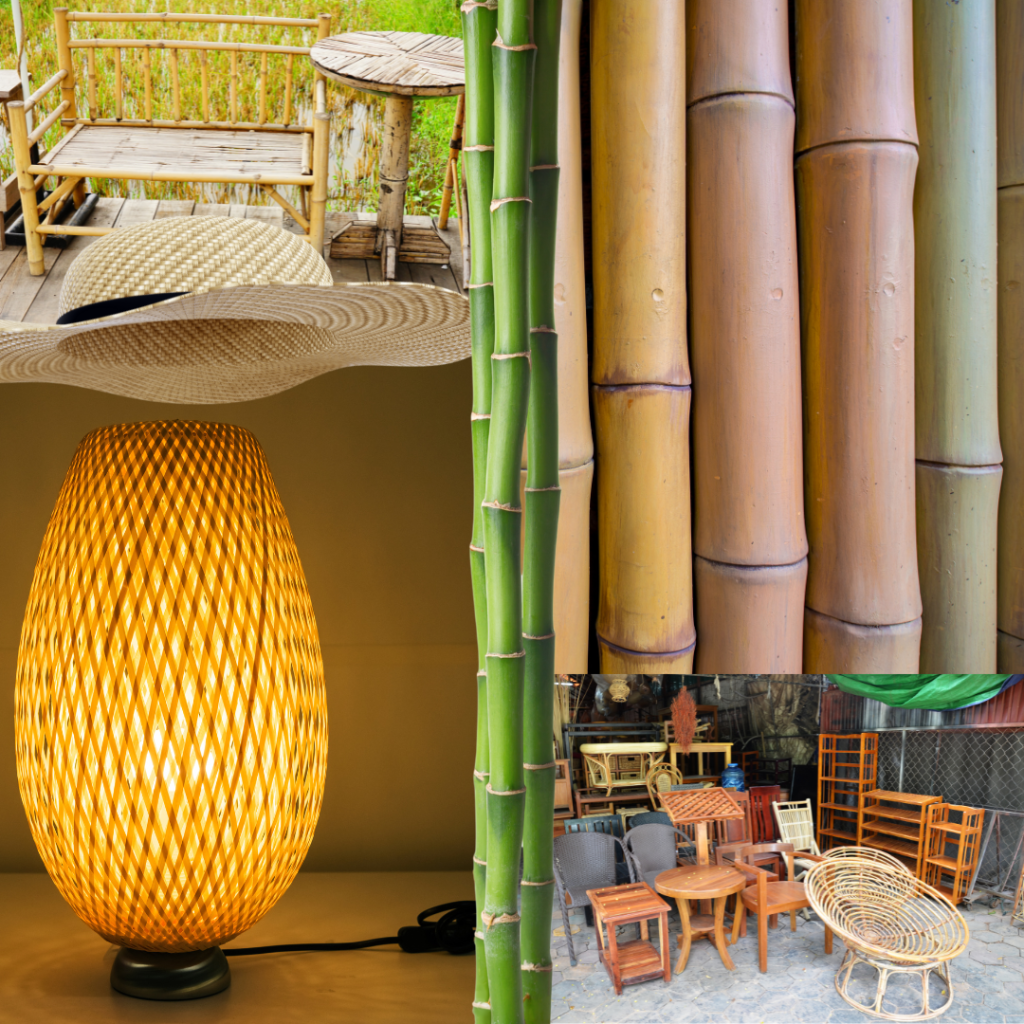
2. Tools & Utensils
- Create plant markers, watering scoops, or even tongs
- Chop smaller culms into utensils, cups, or ladles
- Make reusable and eco-friendly drinking straws!
3. Farm & Garden Use
- Use cut culms as stakes or supports for tomatoes, eggplants, and beans
- Build a lightweight drying rack for produce or herbs
- Construct a simple compost bin using vertical poles and chicken wire
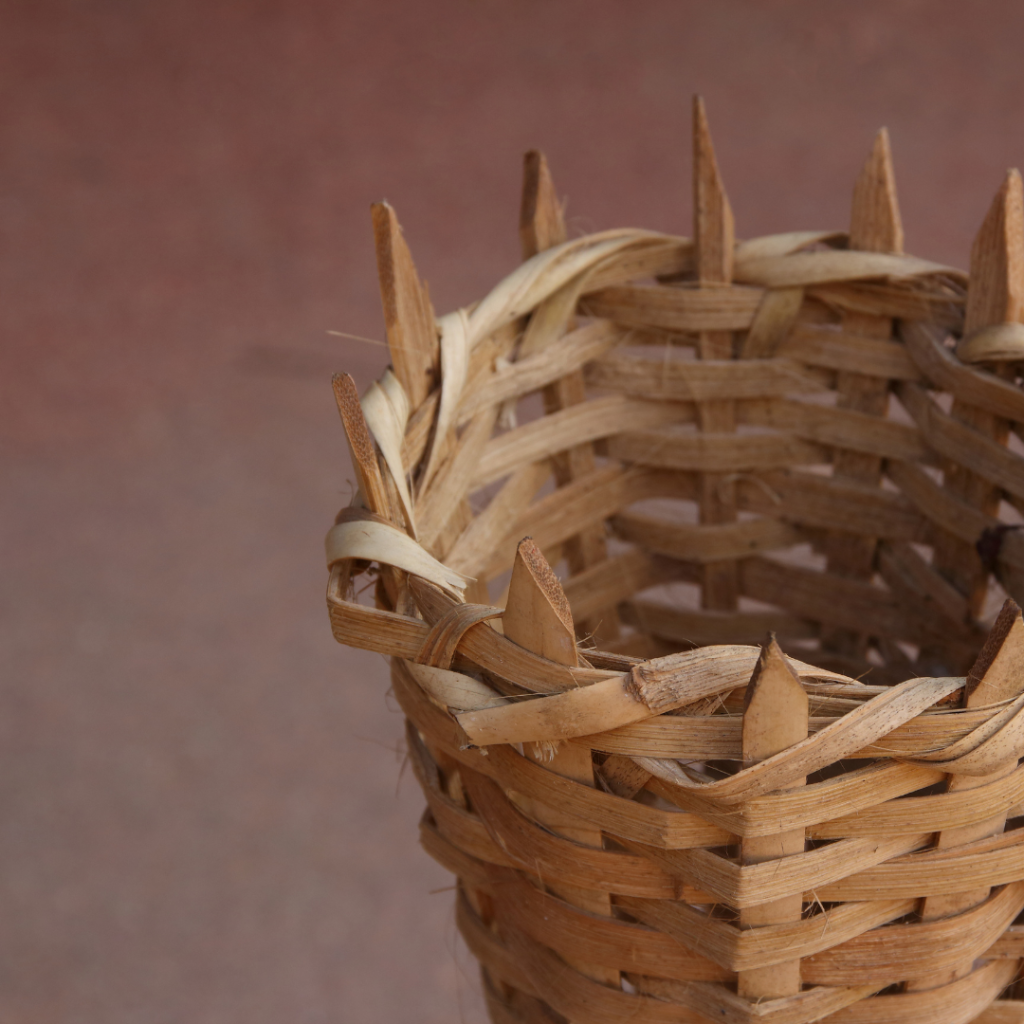
4. Crafts & Home Decor
- Make lanterns, picture frames, or planter holders
- Use thin strips for weaving trays, baskets, or mats
- Design simple wind chimes or backyard ornaments
5. Emergency Uses
In true prepper fashion, bamboo can help when times get rough:
- Splints or stretchers in first aid scenarios
- Temporary shelter frames or lean-tos
- Fire starters — dried bamboo ignites quickly
- Even improvised weapons or traps (for self-defense or food)
Final Thoughts
Bamboo isn’t just a grass.
It’s a solution.
In a world where people are going back to basics, starting small backyard farming setups, and preparing for anything from pandemics to rice shortages, bamboo stands tall — literally and figuratively.
Whether you’re a seasoned farmer, a curious amateur farmer, or a resourceful prepper, try planting bamboo in pots. You’re not just growing plants. You’re growing protection, food, beauty, and peace of mind.


